Description of the best varieties of gherkin cucumbers for open ground
Vegetable growers often boast in front of familiar grown and rolled up small cucumbers. But for the most part, these are just unripe simple varieties, gherkin cucumbers for open ground are grown from specially bred varieties. They do not outgrow if not harvested on time and remain small. Consider a description of the best varieties of gherkins and find out the features of their cultivation.
The best gherkins
There are many varieties and hybrids of gherkins for open ground. Among them there are suitable for cultivation and in our weather conditions. They have excellent gustatory characteristics and are versatile to grow.
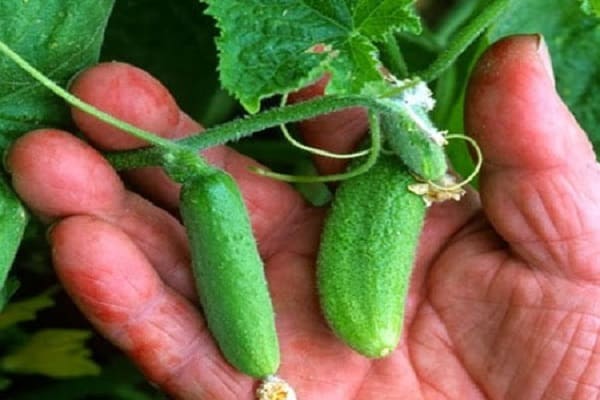
Parisian gherkin
This is an early maturing f1 hybrid pollinated by bees, so it is better to grow it on ridges without film cover. The seeds give their first fruits 42 days after planting. The length of the vegetable varies from 6 to 9 centimeters. The cucumber is oval, oblong, green on one side and pale yellow on the other. The vegetable is covered with small tubercles. The taste is excellent.
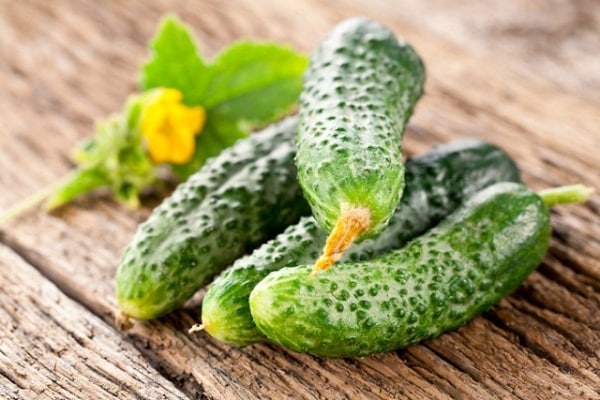
Kai and Gerda
Parthenocarpic mid-season hybrid of the first generation. It takes 50 days from the moment of planting in the ground to receiving the harvest. The type of ovary is bunched, in one bunch from 2 to 6 fruits ripen at the same time. Elongated cucumbers of light green color with light lines next to the flower. The weight of a ripe vegetable reaches 75 grams. It is resistant to powdery mildew disease. Used for cultivation in open areas and for greenhouses.

Thumbelina
A gherkin variety of medium ripening of the parthenocarpic type, does not need insect pollination of flowers, therefore it can be grown in open and closed areas. A plant of medium climbing. The fruits are green with small lines of light color near the flower. In adulthood, they weigh 95 grams. Has the best taste, intended for fresh consumption and pickling.
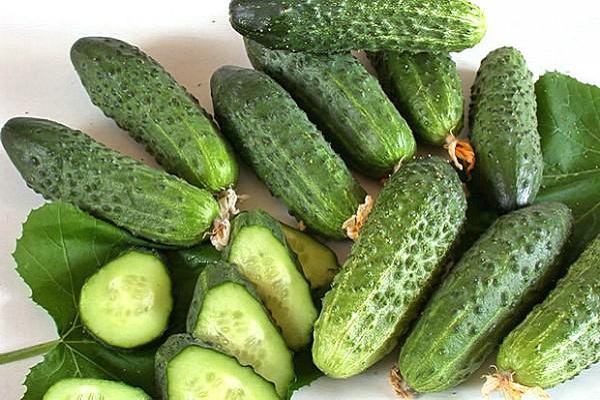
Prepaid expense
An early ripening hybrid that does not need pollination by insects, bred for planting mainly in greenhouses. The period from planting seeds in the ground to harvesting lasts only 40 days. Zelentsy are smooth, bumpy, green. Covered with small thorns. Subtle bright stripes are visible on the surface. The hybrid variety is suitable for pickling and fresh consumption.
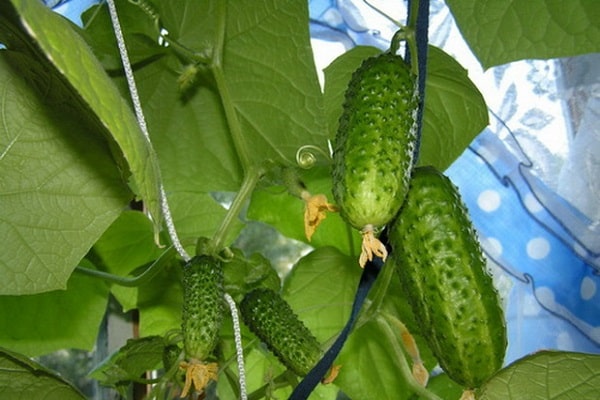
Accordionist
An early variety produced for greenhouses and open beds. Tufted type of ovary - in one inflorescence up to 8 fruits ripen at the same time. The size of a ripe gherkin varies from 10 to 12 centimeters.Differs in increased yield of the harvest, up to 11 kilograms of vegetables are removed from a square meter. The cucumber is emerald green with yellow stripes.
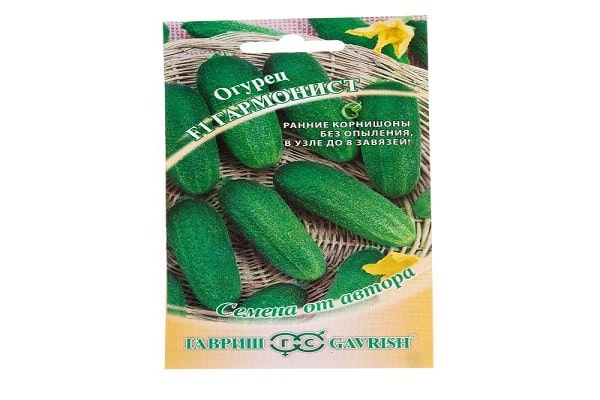
Moravian gherkin
Has an early growing season. Developed for planting in open areas. Fruits of light green color with small tubercles all over the plane. A ripe vegetable weighs 65-95 grams and is 8-10 centimeters long. Has excellent taste and a large amount of trace elements. Grown for universal use.

Diva
A productive variety, up to 28 kilograms of ripe fruits are removed from one square. 35-40 days pass from the moment of planting to harvest. Fruits are dark green in color with many small tubercles. The weight of one fruit reaches 90-100 grams. The average size varies between 10-12 centimeters. The vegetable is universal - suitable for all types of preservation.
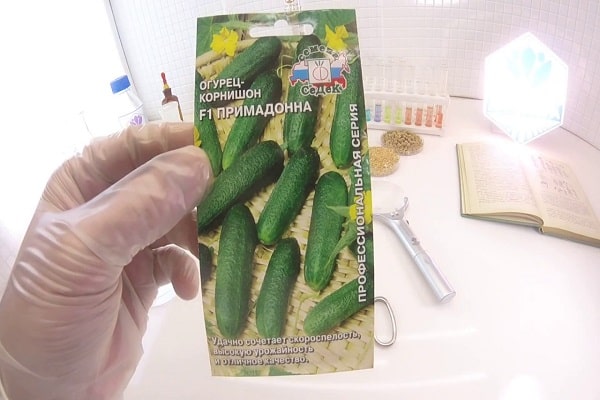
Funny company
Early maturity and quick return - that's about him. The f1 hybrid bears excellent fruit indoors and outdoors, the green has a cylindrical shape and light green color. The weight of a mature fruit is 70–85 grams and a length of 9–11 centimeters. Tufted ovaries with 3-4 fruits grow on the bush. Ripe cucumber of cylindrical shape with rare small tubercles. Has bright taste and curing qualities. Adapted to popular diseases and responds well to mineral supplements.
All hybrids are adapted for production in climatic zones of Russia, Belarus, Ukraine. Attention should be paid to the growing conditions - bee-pollinated hybrids bear fruit best in open areas.
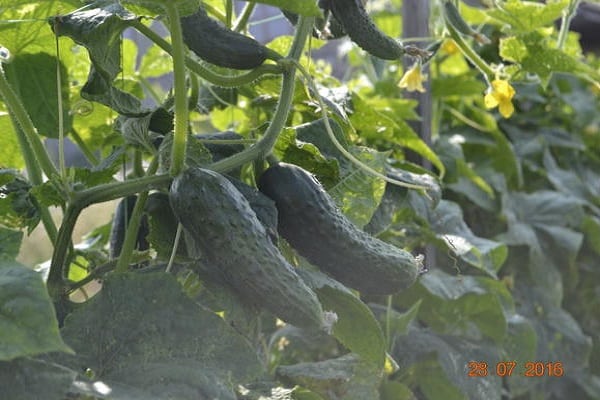
Mini gherkins review
For lovers of small cucumbers rolled up in jars, breeders have brought out mini-gherkins. We have selected from a variety of the best varieties and below described the reviews about their advantages and disadvantages.
Child
The bush of this hybrid is beautifully formed, the fruits are green, light green along the edge. There are few tubercles. Excellent taste, high productivity. Can be grown on balconies and window sills. The name matches the description.
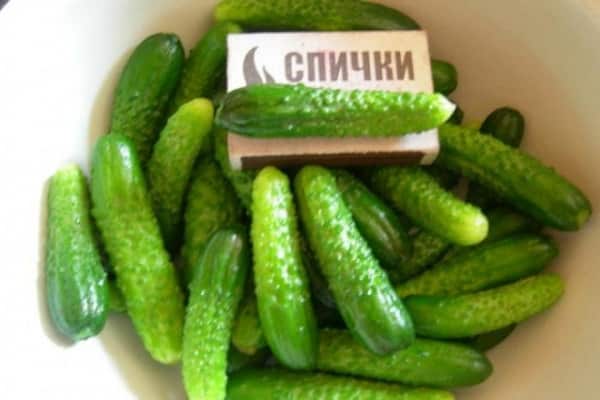
Filipok
The vegetable is of medium ripeness, the ripening period varies within 50 days. It is grown mainly in open areas due to its insect pollination. The bush bears fruit with the help of bundle ovaries. Up to 6 fruits are formed in one ovary. The cucumber is green in color with a lot of small tubercles. The color is solid, white stripes are practically invisible. The taste is cucumber, sweet. The fruits ripen without voids and seeds.
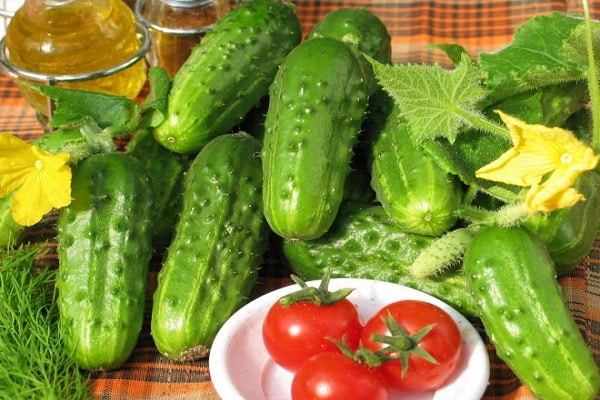
Son of the regiment
Hybrid variety of the first generation - characterized by early ripening of fruits. It takes only 40 days from the moment of planting the seeds in a good growing place to the first harvest. Miniature vegetables - 6-7 centimeters long, in the pickling phase - 2-4 centimeters. When pickled, it retains its taste characteristics. Resistant to fungi and infections.
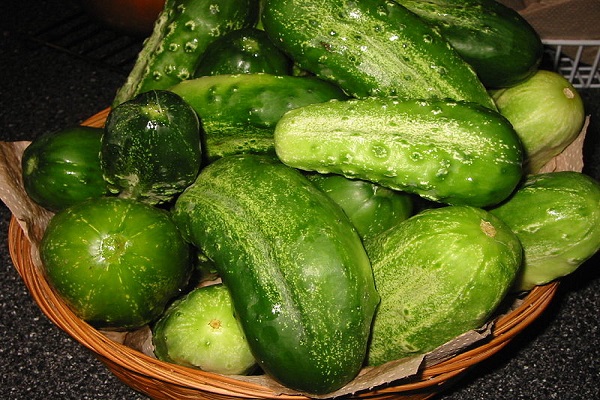
Micron
The first fruiting period of this mini-gherkin is about 40 days. The hybrid needs pollination by bees, so it is recommended to grow it in open beds. The vegetable reaches a size of 7-8 centimeters and stops growing. The fruit has sparse bumps on the surface, the color is dark green with white lines all over the surface. The plant has resistance to overgrowth and a long yield period. Micron cucumbers are resistant to popular diseases.
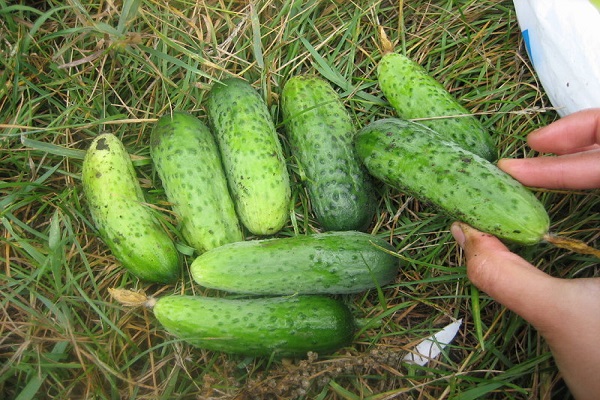
Spring
Early hybrid f1 - 35-40 days pass from planting to ripening of the first fruit. Parthenocarpic type of pollination, therefore cultivation in greenhouses and hotbeds is possible. It reaches 6-8 centimeters in length. The cucumbers are emerald in color, with yellow stripes around the flower. The tubercles with sharp spines are sparsely located on the surface. Long-term fruiting allows you to remove two or three crops per season from one bush.The variety is not afraid of powdery mildew.
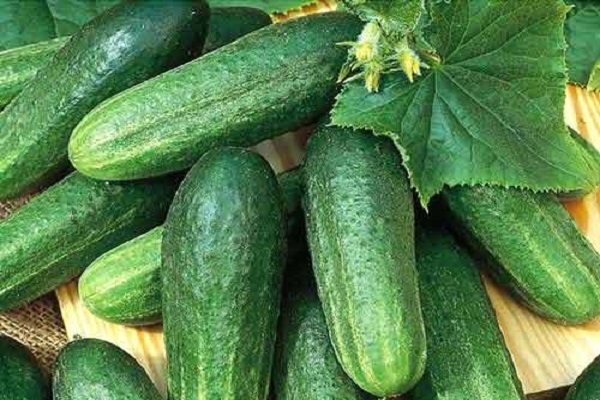
Rules for growing gherkins
To get an excellent harvest of small cucumbers, it is important not only to choose the right variety or hybrid, but also to grow the cucumbers correctly. To do this, you should adhere to the simple rules for growing gherkins in greenhouses and open ground:

- Planting seeds - before planting, it is necessary to decide in what way cucumbers for the greenhouse will be grown: seedling or direct. With the method of planting seeds for seedlings, the harvest will turn out 14 days earlier.
- Determination of the place of growth of bushes - for this type of cucumber, you need to choose a place with light and loose soil. The acidity level should not exceed 7.5 pH. Pre-fertilization of the soil will increase the yield of cucumbers in the future.
- For constant fruiting, you need to water and loosen the beds as needed. Fertilize the soil at least three times a season with mineral and organic fertilizers. Cucumbers respond well to yeast feeding. It's easy to prepare it. A pack of dry yeast is diluted in a 10-liter bucket of water, when the fermentation process begins, the mixture is diluted in 50 liters of water. Plants are watered with this solution.
- Tying and pinching, if necessary, will also improve the growth of the borage and have a beneficial effect on fruit ripening.
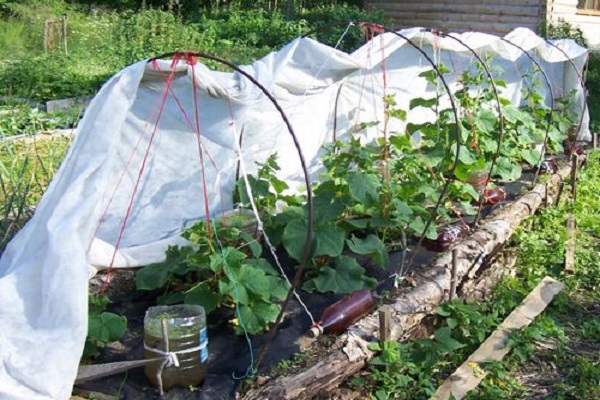
What you need to know about pests and diseases of gherkins?
A feature of growing in open beds is the availability of pest damage to bushes. This is due to the misuse of organics. Aphids eat young leaves, the plant dries up and stops growing. If insects are found on the plants, you must immediately sanitize all beds with gherkins.
When watering in hot sunny weather, the leaves of plants may turn yellow. This is due to sunburn. Watering is recommended in the early morning or late evening, when the sun has already set.
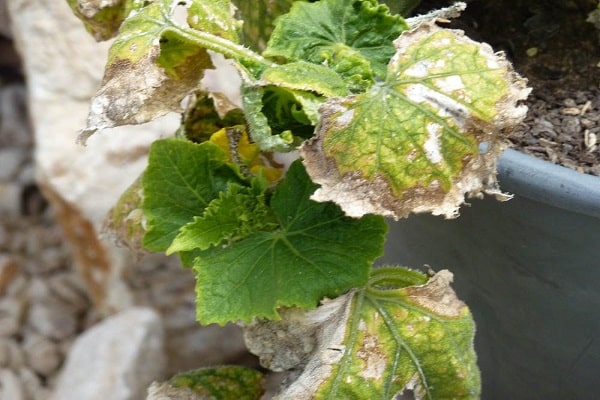
If the crop is not harvested correctly, fruits of different sizes ripen on the bushes. Due to old cucumbers, young ones do not have time to ripen, so timely harvest is needed.
If you follow these simple rules, you will get an excellent harvest of delicious and crunchy gherkins.


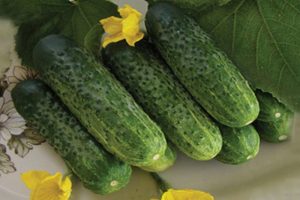
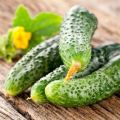
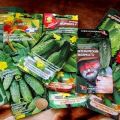
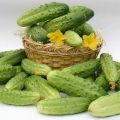
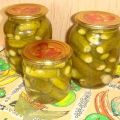

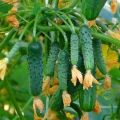
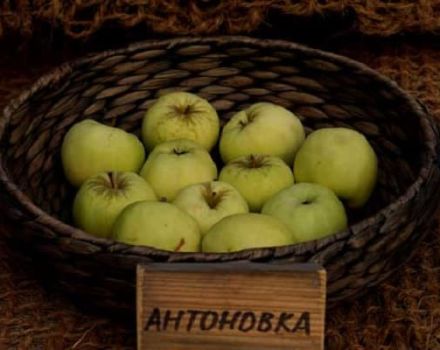
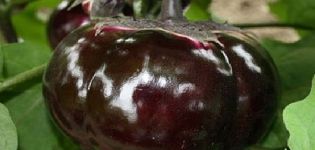
My favorite variety of gherkins is Thumbelina. And they like fresh, but in salting they are generally ideal. When growing I use an activator BioGrowand the yields are excellent even from a couple of holes.